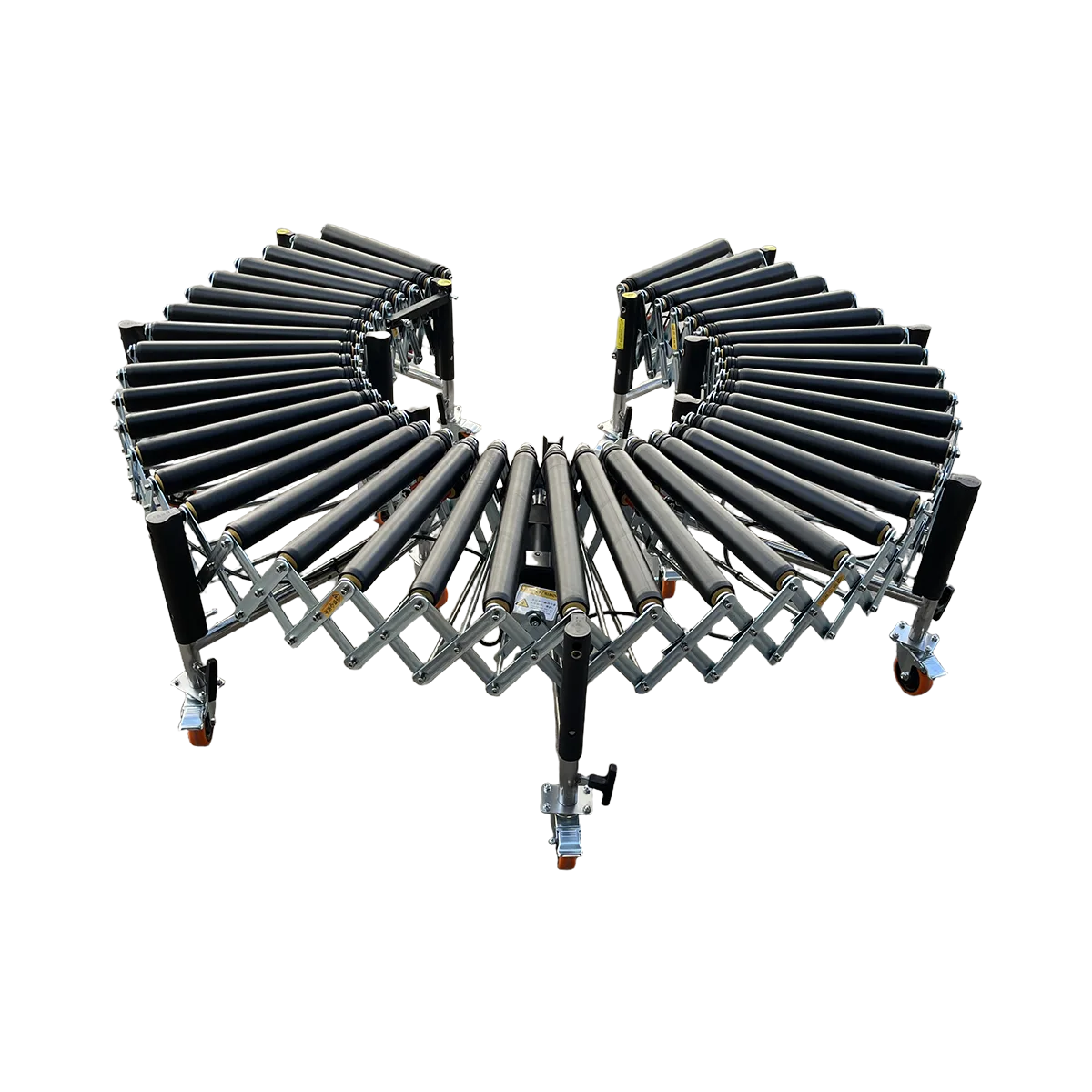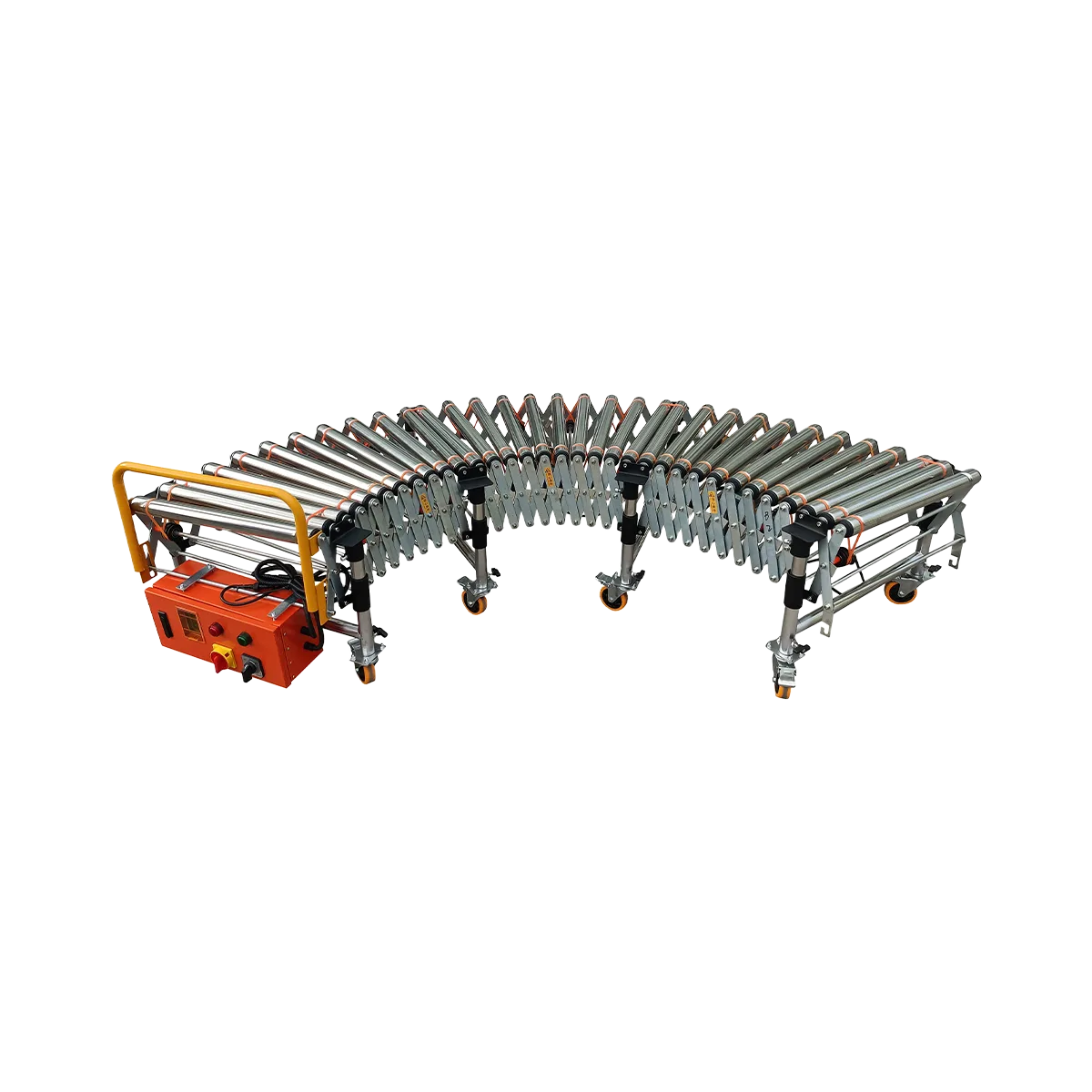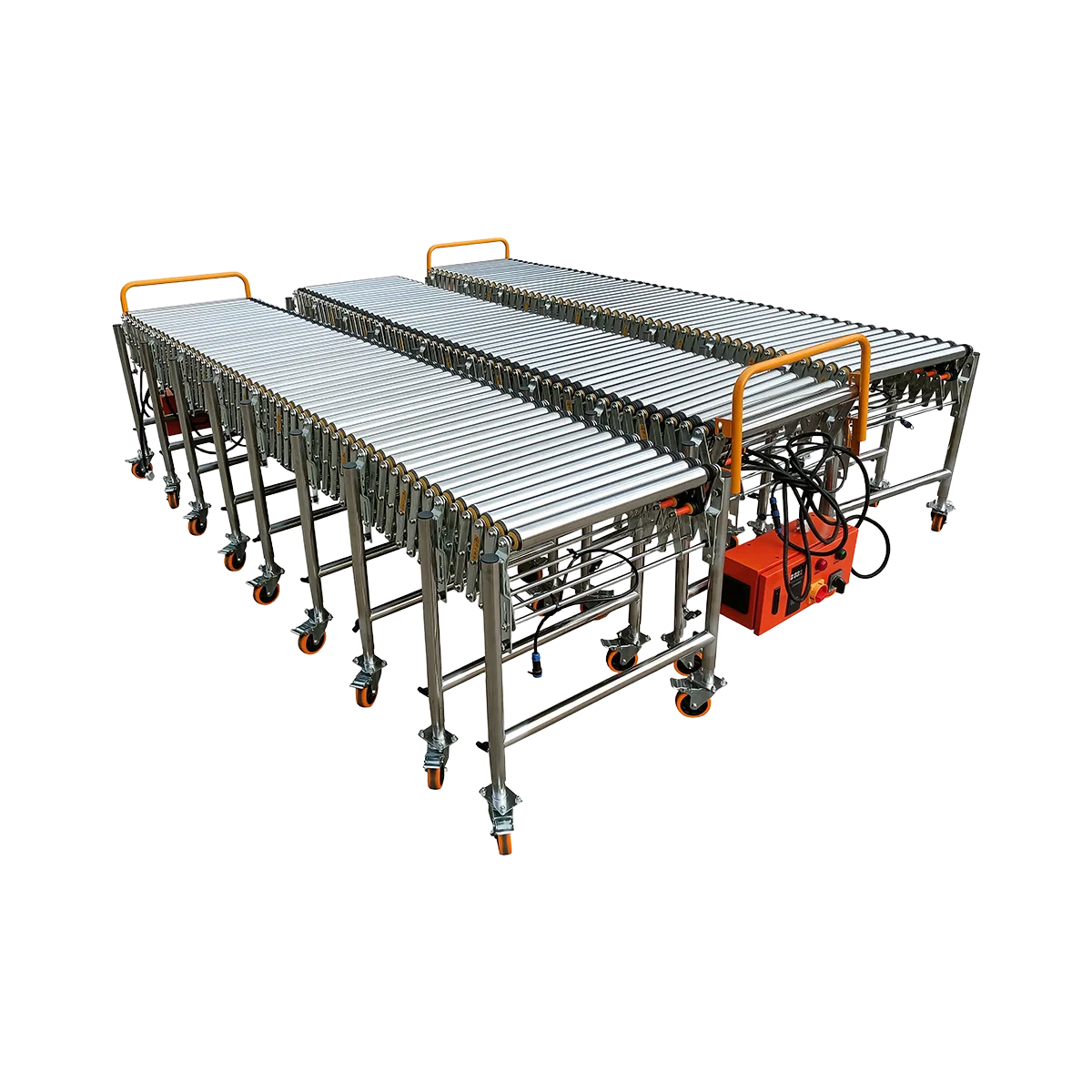How to Choose the Right Conveyor Width (500, 600, or 800mm)
Discover how to select the perfect conveyor width for your warehouse operations. Our expert guide helps you match box sizes to conveyor dimensions for optimal efficiency and fewer jams.
Related Products
-
Powered Rubber Roller Conveyor – Multi-wedge Belt Driven – 1100 mm/SectionCollapsed Length
560 mm
Extended Length1100 mm
Load Capacity120 kg/m
Applicable GoodsFlat-bottomed Goods
Bagged Goods
-
Powered Roller Conveyor – O-shaped Belt Driven – 1500 mm/SectionCollapsed Length
525 mm
Extended Length1500 mm
Load Capacity80 kg/m
Applicable GoodsFlat-bottomed Goods
-
Powered Roller Conveyor – Multi-wedge Belt Driven – 2000 mm/SectionCollapsed Length
700 mm
Extended Length2000 mm
Load Capacity100 kg/m
Applicable GoodsFlat-bottomed Goods
-
Powered Roller Conveyor – Multi-wedge Belt Driven – 3000 mm/SectionCollapsed Length
1050 mm
Extended Length3000 mm
Load Capacity80 kg/m
Applicable GoodsFlat-bottomed Goods
It seems like a simple choice, but selecting the wrong conveyor width can lead to costly problems in your warehouse operations. From package jams and product damage to inefficient space utilization, the width of your conveyor system directly impacts your daily operations. This conveyor width guide will help you understand the factors that should influence your decision when choosing between standard conveyor dimensions of 500mm, 600mm, or 800mm.
Loading and unloading efficiency depends significantly on having properly sized equipment. Too narrow, and you risk packages falling off or jamming; too wide, and you’re wasting valuable warehouse space and paying for capacity you don’t need. Let’s explore how to make the right choice for your specific requirements.
The Golden Rule of Thumb for Conveyor Width Selection
When selecting conveyor width, follow this simple yet effective rule: Your conveyor should be 50-100mm wider than your widest package. This extra space provides the necessary clearance to prevent jams and allows packages to move smoothly through the system, even when slightly misaligned.
For example:
- If your widest regular package is 450mm, choose a 500mm or 600mm conveyor
- If your widest regular package is 550mm, choose a 600mm conveyor
- If your widest regular package is 700mm, choose an 800mm conveyor
This rule applies to all conveyor types, from gravity roller conveyor systems to powered options. The extra margin ensures smooth operation while minimizing the risk of packages catching on side guides or falling off the conveyor.
A Breakdown of Naili’s Standard Widths
500mm: Compact and Efficient
The 500mm width conveyor is ideal for:
- Small parcels and document boxes (up to 450mm wide)
- Uniform goods with consistent dimensions
- E-commerce operations handling primarily small packages
- Facilities with limited floor space
- Operations where space optimization is critical
This narrower option is particularly cost-effective when you know your package sizes will remain consistently small. It also allows for tighter turns and more compact layouts in space-constrained environments.
600mm: The Versatile All-Rounder
The 600mm width is the most popular choice for good reason:
- Perfect for standard logistics cartons (up to 550mm wide)
- Accommodates a wide range of common package sizes
- Offers the best balance between capacity and space efficiency
- Suitable for mixed operations handling both small and medium-sized packages
- Compatible with most standard warehouse configurations
The 600mm width has become an industry standard because it handles approximately 80% of typical logistics packages efficiently. This makes it the go-to choice for most general warehouse and distribution operations.
800mm: Maximum Capacity and Stability
The 800mm width conveyor is designed for:
- Bulky items and oversized packages (up to 700mm wide)
- Furniture components and large appliance boxes
- Facilities handling a wide variety of package sizes
- Operations where package stability is critical
- Future-proofing against increasing package dimensions
While the 800mm option requires more floor space, it provides maximum flexibility for operations dealing with variable or larger items. It’s particularly valuable in furniture distribution, appliance handling, or any operation where package dimensions fluctuate significantly.
The Hidden Factor: Stability Considerations
Width selection isn’t just about accommodating package dimensions—it’s also about stability. A wider conveyor provides a better base of support, which becomes especially important in certain scenarios:
- Curved sections: Packages need more stability when navigating turns
- Tall or top-heavy items: Wider conveyors reduce tipping risk
- High-speed operations: Faster movement increases instability
- Irregular shapes: Non-standard packages benefit from additional support
- Mixed loads: When handling various sizes simultaneously, wider conveyors reduce sorting complexity
Even for smaller boxes, a wider conveyor can significantly reduce the chance of tipping on curves or during transitions between conveyor sections. This stability factor is often overlooked but can dramatically impact your system’s reliability.
Conveyor Width Compatibility with Package Dimensions
This table provides a quick reference guide for matching package dimensions to appropriate conveyor widths:
| Package Width | Recommended Conveyor Width | Notes |
|---|---|---|
| Up to 400mm | 500mm | Ideal for small, uniform packages |
| 401-500mm | 600mm | Most versatile option for standard cartons |
| 501-700mm | 800mm | Required for larger items |
| Mixed sizes | 600mm or 800mm | Depends on largest regular item |
Remember that these recommendations assume regular package shapes. For irregular items, consider the widest point of the package when determining the appropriate conveyor width.
Cost vs. Versatility: Making the Economic Decision
Is it worth paying more for a wider conveyor? The answer depends on your specific operation and future needs:
Cost Considerations:
- Wider conveyors generally cost more upfront
- Require more floor space (which has its own cost)
- May increase installation and shipping expenses
- Potentially higher replacement part costs
Versatility Benefits:
- Future-proofing against changing package dimensions
- Reduced jams and operational interruptions
- Lower risk of product damage
- Greater flexibility in handling diverse inventory
For most operations, the 600mm width represents the sweet spot between cost and versatility. However, if your business is growing or your product mix is evolving, the 800mm option offers maximum future-proofing, potentially saving money in the long run by avoiding the need for system replacement.
When calculating return on investment, consider not just the immediate price difference but also the operational costs associated with potential jams, product damage, and efficiency losses that might occur with an undersized system.
Special Considerations for Different Conveyor Types
Different conveyor types may have specific width considerations:
Gravity skate wheel conveyor
- Package stability is especially important due to point contact with skate wheels
- Consider wider options for irregular-bottomed packages
- The 600mm width is typically sufficient for most applications
Powered Roller Conveyors
- Can handle narrower widths more effectively due to consistent power
- Width selection should consider both current and future package dimensions
- Multiple width zones may be beneficial for sorting operations
Telescopic Conveyors
- Width selection affects both extended and retracted footprint
- Consider truck/container dimensions when selecting width
- Wider options provide better stability when fully extended
Conclusion: Measure, Add, and Select
Choosing the right conveyor width doesn’t need to be complicated. Follow these simple steps:
- Measure your largest common item
- Add 100mm for clearance and stability
- Select the next standard size up (500mm, 600mm, or 800mm)
This approach ensures your conveyor system will handle your current needs while providing some flexibility for the future. Remember that while it might be tempting to save money with a narrower conveyor, the operational benefits of adequate width—fewer jams, better stability, and greater versatility—often outweigh the initial cost savings.
By selecting the appropriate width for your specific needs, you’ll maximize efficiency, minimize maintenance issues, and create a smooth-running operation that can adapt to your business requirements.
Frequently Asked Questions
Can I mix different conveyor widths in the same system?
Yes, you can transition between different widths using tapered transition sections. This is useful when different parts of your operation handle different package sizes, but transitions should be minimized to reduce potential jam points.
What if I occasionally handle packages wider than my conveyor?
For occasional oversized items, manual handling may be required. If these items become more frequent, consider adding a separate wider conveyor line for these exceptions rather than oversizing your entire system.
Does conveyor width affect throughput capacity?
Width itself doesn’t directly impact throughput (packages per hour), but an appropriately sized width prevents jams and slowdowns that would reduce effective throughput. Speed and motor power have more direct effects on capacity.
How does conveyor width impact energy consumption?
Wider conveyors may require slightly more energy to operate due to increased weight and friction, but the difference is minimal compared to other factors like speed and load. Efficiency losses from jams on too-narrow conveyors typically outweigh any energy savings.
Should I choose the same width for my entire conveyor system?
While consistent width throughout the system is ideal for simplicity, different sections can have different widths based on their specific functions. For example, sorting areas might benefit from wider conveyors, while straight transport sections could use narrower widths if package sizes allow.
Table of Contents
Recent Posts
Discover effective outdoor conveyor solutions for connecting warehouse to truck across open yards. Our guide to all-weather yard logistics will transform your loading efficiency.
Discover the ideal van loading conveyor solution for Sprinter, Transit and other delivery vehicles. Our Micro Hydraulic Conveyor system boosts efficiency while saving labor costs.




